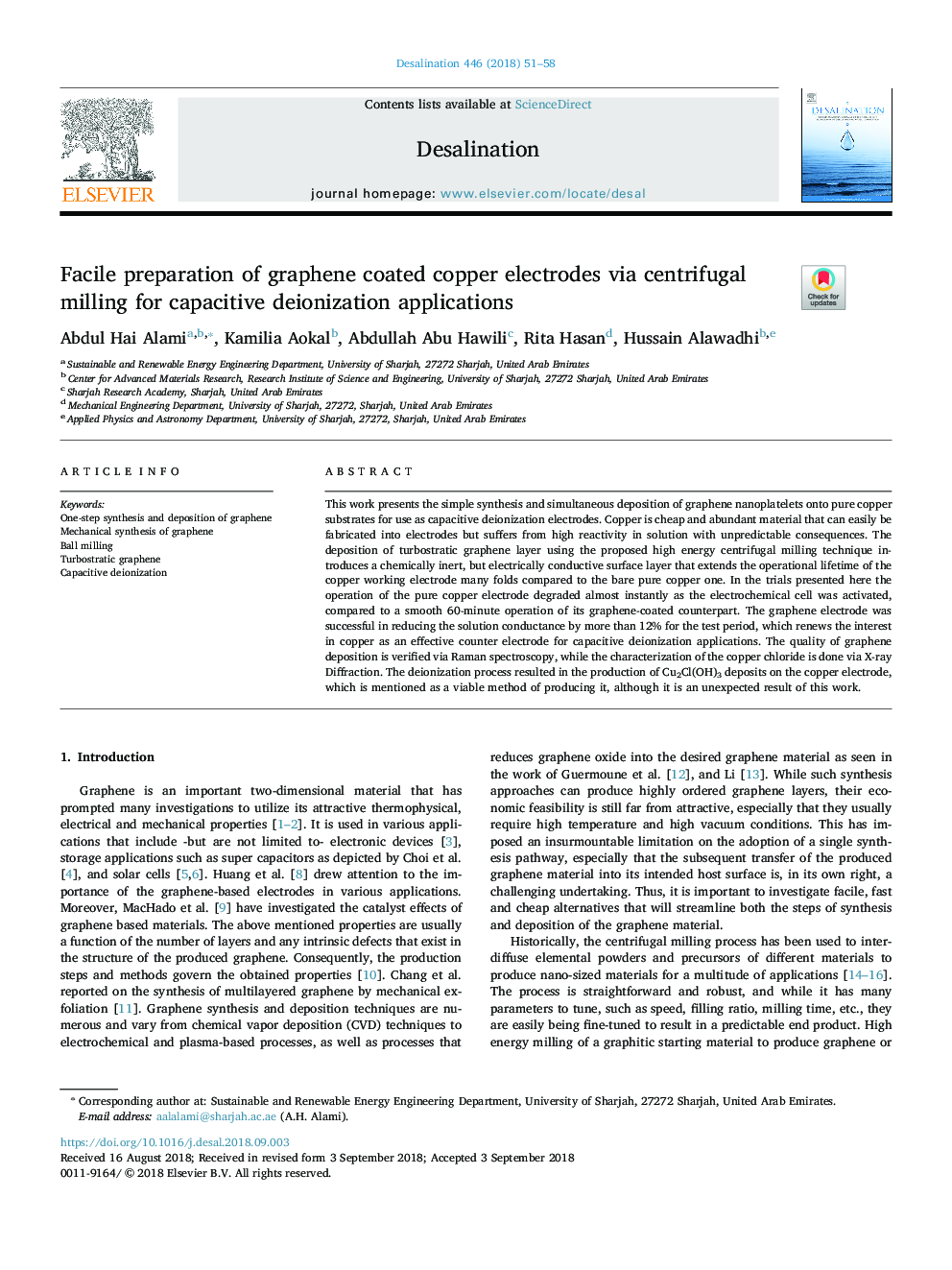| Article ID | Journal | Published Year | Pages | File Type |
|---|---|---|---|---|
| 10139827 | Desalination | 2018 | 8 Pages |
Abstract
This work presents the simple synthesis and simultaneous deposition of graphene nanoplatelets onto pure copper substrates for use as capacitive deionization electrodes. Copper is cheap and abundant material that can easily be fabricated into electrodes but suffers from high reactivity in solution with unpredictable consequences. The deposition of turbostratic graphene layer using the proposed high energy centrifugal milling technique introduces a chemically inert, but electrically conductive surface layer that extends the operational lifetime of the copper working electrode many folds compared to the bare pure copper one. In the trials presented here the operation of the pure copper electrode degraded almost instantly as the electrochemical cell was activated, compared to a smooth 60-minute operation of its graphene-coated counterpart. The graphene electrode was successful in reducing the solution conductance by more than 12% for the test period, which renews the interest in copper as an effective counter electrode for capacitive deionization applications. The quality of graphene deposition is verified via Raman spectroscopy, while the characterization of the copper chloride is done via X-ray Diffraction. The deionization process resulted in the production of Cu2Cl(OH)3 deposits on the copper electrode, which is mentioned as a viable method of producing it, although it is an unexpected result of this work.
Keywords
Related Topics
Physical Sciences and Engineering
Chemical Engineering
Filtration and Separation
Authors
Abdul Hai Alami, Kamilia Aokal, Abdullah Abu Hawili, Rita Hasan, Hussain Alawadhi,
